What we know about the M1 Pro and M1 Max so far
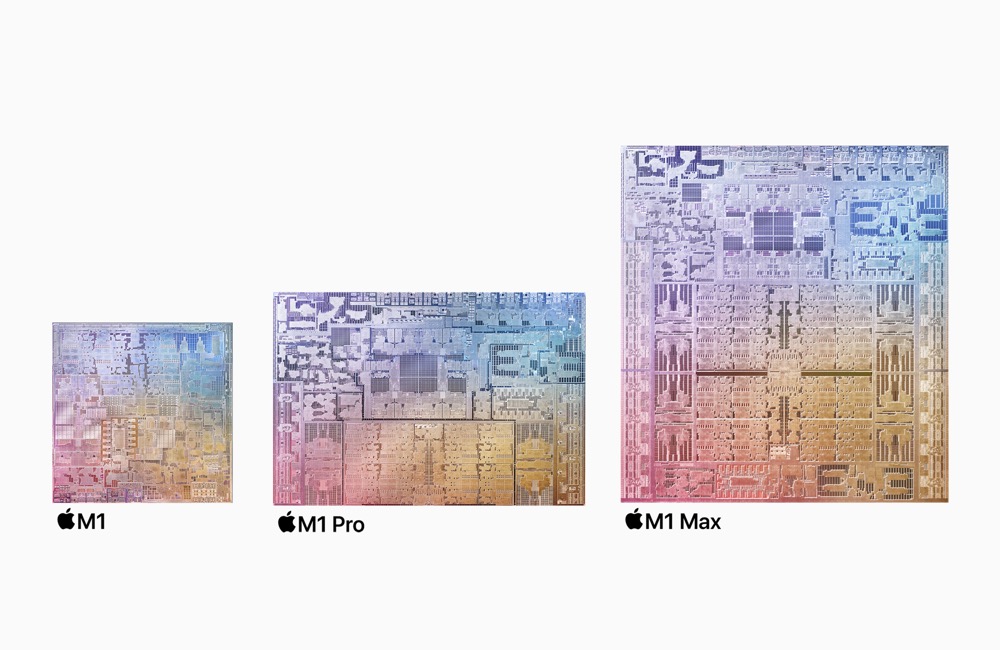
Three chips together: M1, M1 Pro, M1 Max
Apple calls them the most powerful chips it has ever built, but it may have been better to say these are the best it has designed, given they are manufactured by TSMC. That criticism aside, I think we’ve all been impressed by what Apple told us about its processors. What do we know so far?
The basic facts
The M1 Pro and M1 Max are the more powerful siblings of the incredibly well-received M1 chips Apple introduced with the Mac mini and Macbook Air in 2020.
The first Macs to join Apple’s transition to the company’s own processor design, pretty much everyone who used one was impressed by them. The new chips build on that same achievement.
Apple has put the new processors inside two new models of the MacBook Pro. Inside them you’ll find power efficient chips featuring up to a 10-core CPU, 32-core GPU, 64GB of unified memory and ProRes acceleration.
Apple says the CPU in M1 Pro and M1 Max delivers up to 70 percent faster CPU performance than M1, so tasks are faster than ever. The GPU in M1 Pro is up to 2x faster than M1, while M1 Max is up to 4x faster than M1.
![]()
The result? While M1 chips really powered through most tasks, these more powerful chips will kick on through those same tasks while still remaining hungry for more. That means real productivity gains for most of us – and will do nothing to stop PC users gasping to move to Mac.
What’s happening in these things?
Apple has designed the system-on-a-chip (SoC) architecture in these chips to meet the needs of its users. That’s why they offer fast unified memory, industry-leading performance per watt, and incredible power efficiency, along with increased memory bandwidth and capacity.
As explained elsewhere, M1 Pro offers up to 200GB/s of memory bandwidth with support for up to 32GB of unified memory. The M1 Max takes this higher, with up to 400GB/s of memory bandwidth — 2x that of M1 Pro and nearly 6x that of M1 — and support for up to 64GB of unified memory.
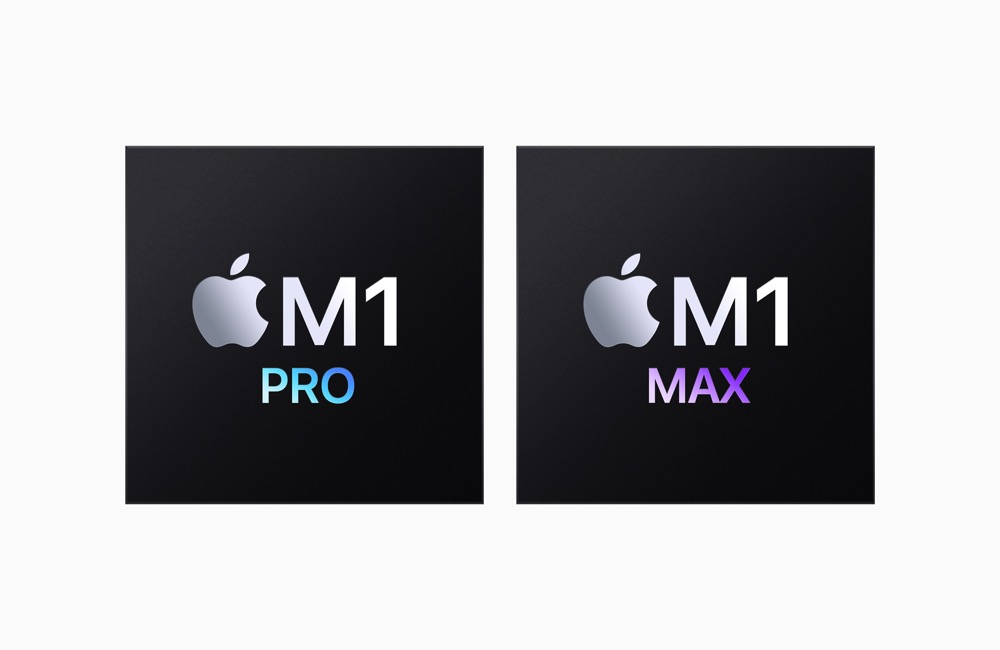
Apple also announced:
- Everything we know about MacBook Pro with M1 Pro and M1 Max
- Apple updates Final Cut and Logic Pro for new Macs
- AirPods 3 gain spatial audio, battery life and design tweaks
- HomePod mini now also comes in yellow, orange and blue
- What is the Apple Music Voice Plan?
Bearing in mind that most PC laptops top out at 16GB of graphics memory, the capacity to host all this memory (along with the tight integration between the chip and the OS) should enable incredibly intensive workflows. Which is, of course, what Apple claims they deliver.
Apple also tells us the way these chips are built means they can deliver the same performance whether the Mac is plugged in or not. Both chips also offer enhanced media engines with dedicated ProRes accelerators specifically for pro video processing.
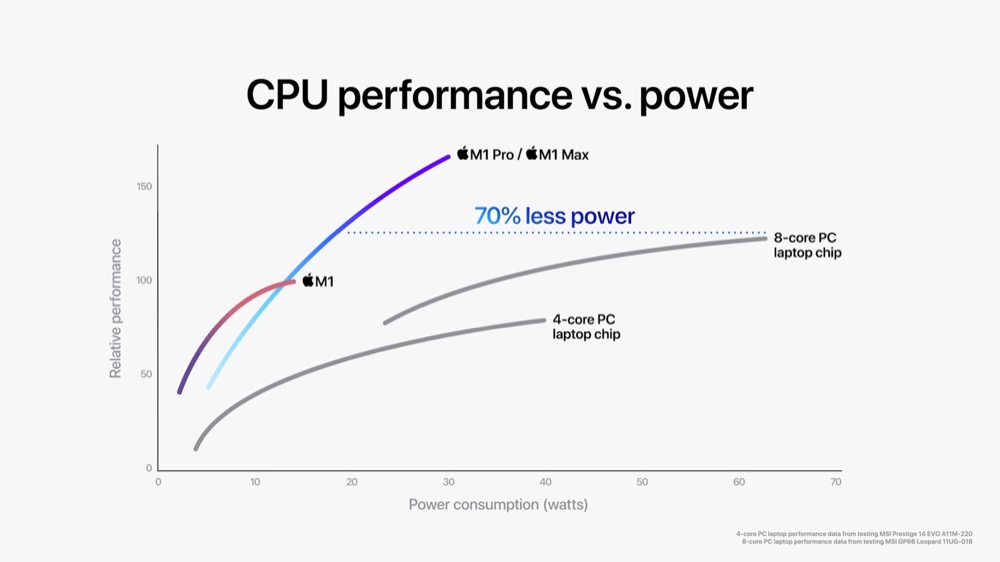
What Apple said
These are the most powerful and capable chips Apple has ever created, the company said, adding “and together with M1, they form a family of chips that lead the industry in performance, custom technologies, and power efficiency.”
While I find the boiler plate quotes on press releases a little annoying, Apple’s senior vice president of Hardware Technologies, Johny Srouji isn’t wrong when he says the new chips provide, “incredible performance, custom technologies, and industry-leading power efficiency. No one has ever applied a system-on-a-chip design to a pro system until today with M1 Pro and M1 Max.”
“With massive gains in CPU and GPU performance, up to six times the memory bandwidth, a new media engine with ProRes accelerators, and other advanced technologies, M1 Pro and M1 Max take Apple silicon even further, and are unlike anything else in a pro notebook.”
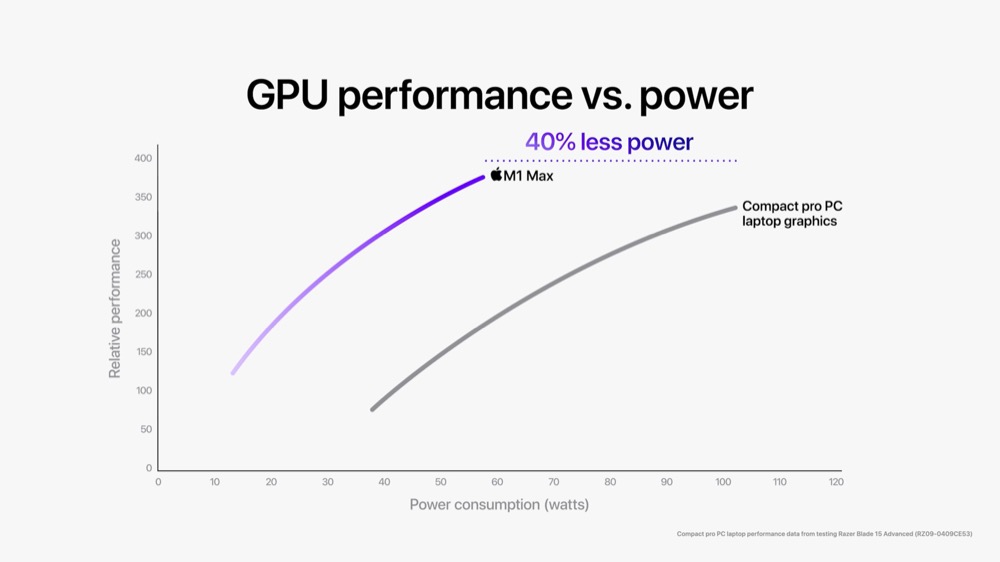
The chip inside
The processors are manufactured using industry-leading (no other mass market PCs have them) 5-nanometre process technology.
That means the M1 Pro carries 33.7 billion transistors, and boasts a 10-core CPU, including eight high-performance cores and two high-efficiency cores. Apple says this chip is up to 70 percent faster than M1.
M1 Pro
M1 Pro delivers up to 1.7x more CPU performance at the same power level when compared with the latest 8-core PC laptop chip. It also “achieves the PC chip’s peak performance using up to 70 percent less power.”
M1 Pro has an up-to-16-core GPU that is up to 2x faster than M1 and up to 7x faster than the integrated graphics on the latest 8-core PC laptop chip. It uses less power and can be configured with up to 32GB of fast unified memory, with up to 200GB/s of memory bandwidth.
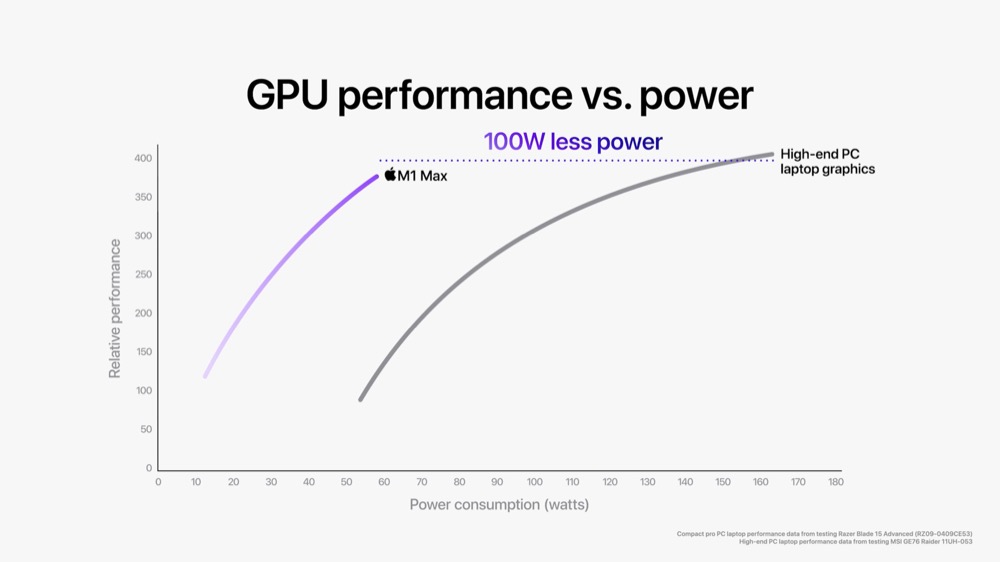
M1 Max
M1 Max features the same powerful 10-core CPU as M1 Pro and adds a 32-core GPU for up to 4x faster graphics performance than M1.
With 57 billion transistors — 70 percent more than M1 Pro and 3.5x more than M1 — M1 Max is the largest chip Apple has ever built. It promises performance similar to that of the highest-end GPU in the largest PC laptops while using up to 100 watts less power.
M1 Max also offers a higher-bandwidth on-chip fabric, and doubles the memory interface compared with M1 Pro for up to 400GB/s, or nearly 6x the memory bandwidth of M1. This allows M1 Max to be configured with up to 64GB of fast unified memory.
Of course, with Apple’s customary modesty, it also states: “With its unparalleled performance, M1 Max is the most powerful chip ever built for a pro notebook.”
One more thing of course: Apple’s next big introduction will be an M-powered Mac Pro. Which Bloomberg’s Mark Gurman points out. Well, he points this out:
For those who think the M1 Pro and M1 Max in the MacBook Pro are impressive, the new Mac Pro desktop is expected to come in at least two variations: 2X and 4X the number of CPU and GPU cores as the M1 Max. That’s up to 40 CPU cores and 128 GPU cores on the high-end.
— Mark Gurman (@markgurman) October 18, 2021
Both chips include an Apple-designed media engine that accelerates video processing while maximising battery life. M1 Pro also includes dedicated acceleration for the ProRes professional video codec, while M1 Max features two ProRes accelerators.
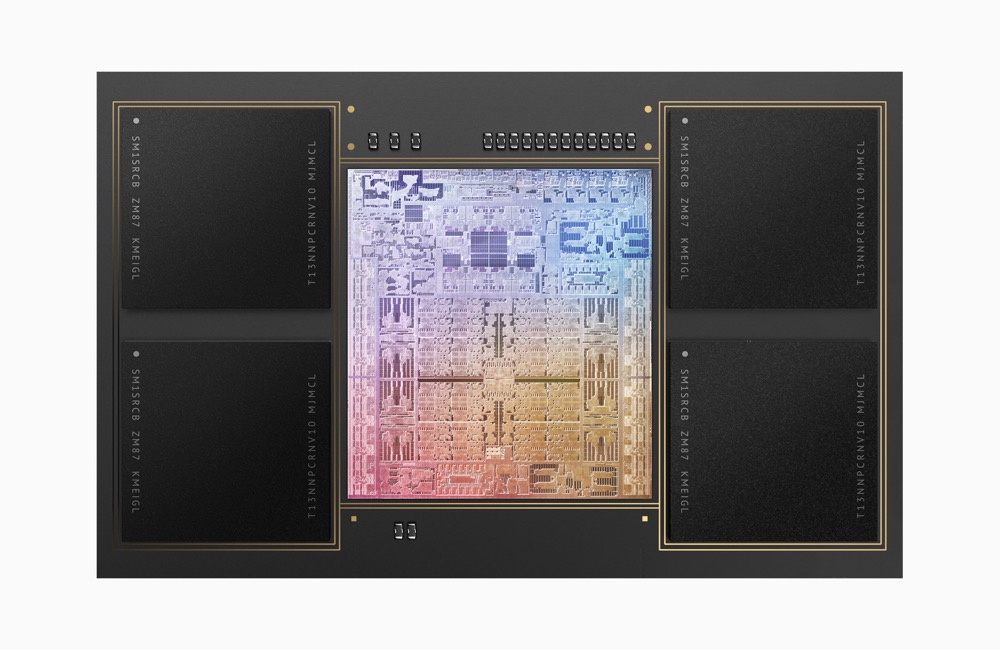
Making a difference where you need them
The chips also support technologies focused on delivering advantages where users are, so include enhancements for AI, displays, interconnectivity, security and more, for example:
- A 16-core Neural Engine for on-device machine learning.
- A new display engine drives multiple external displays.
- Thunderbolt 4 controllers provide more I/O bandwidth.
- Apple’s custom image signal processor, along with the Neural Engine, uses computational video to enhance image quality for sharper video and more natural-looking skin tones on the built-in camera.
- Best-in-class security, including Apple’s latest Secure Enclave, hardware-verified secure boot, and runtime anti-exploitation technologies.
- Built tight to macOS Monterey to optimize results.
Every chip Apple creates, from design to manufacturing, will be 100 percent carbon neutral.
Please follow me on Twitter, or join me in the AppleHolic’s bar & grill and Apple Discussions groups on MeWe.




